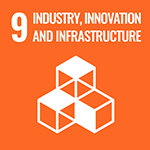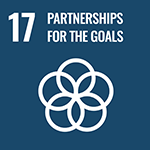Establishment of Carbon-Cycle-System with Natural Rubber
Principal Investigator
ODA Recipient Country
Socialist Republic of Vietnam
Research Institutions in Japan
Nagaoka University of Technology / National Institute for Environmental Studies (NIES)
Research Institutions in Counterpart Country
Hanoi University of Science and Technology (HUST) / Rubber Research Institute of Vietnam (RRIV)
Adoption fiscal year
FY 2010
Research Period
5 Years
Overview of the Research Project
Reducing CO2 emissions by replacing synthetic rubber with natural rubber
Enormous quantities of CO2 are emitted during the manufacture and use of petroleum-derived synthetic rubber as the raw material for car tires. Replacement of the synthetic rubber with natural rubber, which is derived from trees that capture and store CO2, would help to prevent global warming. This project is working to advance the refining technology for removing proteins from natural rubber, thereby enabling a wider range of uses and the development of new materials. In addition, researchers are working to enhance and apply technology for processing wastewater and rubber tree waste in order to reduce CO2 emissions at the manufacturing stage and the impact on the environment. These activities are expected to cultivate the foundations of a next-generation natural rubber industry.
Creating new industries through high-performance rubber and advanced polymers
In order to foster a next-generation natural rubber industry, the project is attempting to develop high performance natural rubber that can be used for products such as ultra-light weight tires, to develop functional polymers appropriate for new applications such as battery and auto body materials, and to define new assessment methods compatible with high quality refined natural rubber, as well as achieving advances in energy-recovering wastewater and waste treatment technology suitable for treating effluent and rubber tree waste from the manufacture of natural rubber.
Photo gallery
Research Project Web site
Press Release
Links
Projects
Contact Us
Japan Science and Technology Agency (JST)
Department of International Affairs
SATREPS Group
TEL : +81-3-5214-8085
Related articles by Category
- Global-scale environmental issues
Environment / Energy
(Global-scale environmental issues)
 Republic of Kazakhstan
Republic of Kazakhstan
Aim for zero pollution by digitizing mines with “Smart Mining Plus”!
Next-generation Smart Mining Plus for Sustainable Resources Development
- Vietnam
Environment / Energy
(Carbon Neutrality)
 Socialist Republic of Vietnam
Socialist Republic of Vietnam
Regenerating cassava farm land by storing carbon in the soil!
Transforming the Cassava Production System in Vietnam by Establishing Regenerative Farming and Smart Starch Supply Chain Management
- Asia
Environment / Energy
(Carbon Neutrality)
 Kingdom of Thailand
Kingdom of Thailand
Mobilizing data and models to help reduce traffic congestion in Bangkok!
Data Driven Dynamic Transport Management in Emerging Metropolis for Climate Change Mitigation
- SDGs : Goal.9
Bioresources

 Republic of Colombia
Republic of Colombia
Enabling sustainable beef production by eliciting the power of cattle and grasslands on a digital platform!
Creation of Beef Value Chain by Optimizing Ruminal Microbiota and Grassland Management on Digital Platform





















